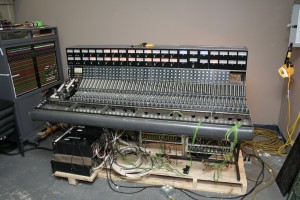
It is common to talk about problem solving as breaking down the problem into manageable chunks and tackling them one at a time. We apply this or similar methods based on our own experiences and training.
In a recent conversation with Mike Volpe of Hubspot, I realized I was taking an approach to a problem not through my public relations training, despite that being my main industry of employment for a dozen years, but through an older discipline: audio.
I majored in radio at college (remember radio?), and on the tech side, the most important practical advice was to follow “signal flow.” Is one of the microphones not showing up in the live mix? is the sound a little fuzzy or processed when it shouldn’t be? Follow the signal through the various places it passes, for example:
- From the origin (instrument, voice, or tape machine)
- Through the microphone- is it on? Is it working?
- Through the cable- is it connected properly? Is it defective?
- Through the inputs- is the connection solid?
- Through the mixing console- is the gain (volume) up? too high? Is the channel assigned to the correct output? Is the fader/volume on? Is the main output on?
- Through the recording medium- are the channels assigned properly? Is the recording level correct? Did you hit “record?”
And so on- those questions may differ based on what you are recording, but even with the spread of more digital recording and simpler, more portable recording equipment, the principle is the same.
If you have a problem- marketing, technological, anything– do you follow the path the problem travels to find the answer? Do you use signal flow?
What do you think?

I could see you been good at audio, this is helpful alot of people want to know how to podcast. Further applications would be helpful.
I follow those steps for every problem I have or problems that aren’t even problems yet, i.e. crisis planning. It’s simple, yet effective. If this, then that, etc.
DaraBell- Yes, applying this directly- and literally- to podcasting has been a help for me
Don- What I like best about this metaphor is that it makes me see things as a chain, and not just pieces. Cause and effect are much easier to visualize